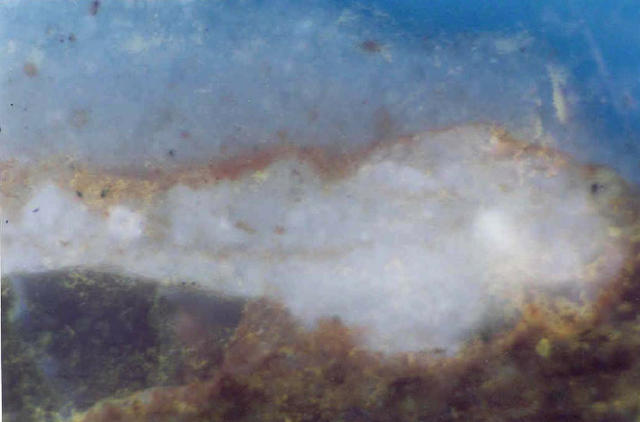
Because architectural historians are unsure if red washes were more commonly made from hide glue or lime, the binder used for Montpelier’s wash needed to be determined. To determine the composition of the binder, samples were analyzed using florochrome staining to detect proteins, acid digestion to test for lime, and FTIR/SEM-EDS to provide elemental analysis. Florochrome staining was an important test with a strong reaction indicating that hide glue was used while a weak reaction would point to a lime-based paint. After the florochrome testing only a very small amount of protein was found in the samples, signifying that hide glue was not used in the red wash (the trace amounts of proteins found in the sample may have been due to the addition of milk or other ingredients to the wash to increase its durability). After the acid digestion tests it was found that all of the samples tested reacted strongly to the acid, a sign also indicating that a large percentage of lime was found in the sample.

©The Montpelier Foundation and Dr. Susan Buck
|
|
A sample of red wash after florochrome had been applied to test if proteins were found in the sample. |










